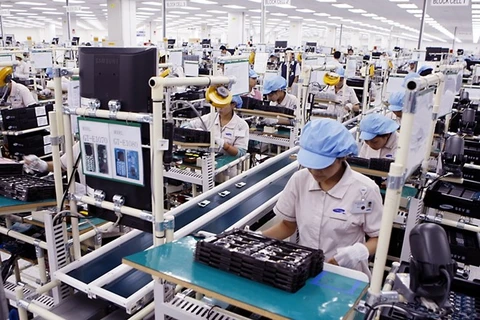 The CPTPP, which officially came into force on December 30, 2018, is expected to provide a push for Vietnam to reform its economic institutions and further improve the business climate to optimize opportunities brought by the deal (Illustrative photo: VNA)
The CPTPP, which officially came into force on December 30, 2018, is expected to provide a push for Vietnam to reform its economic institutions and further improve the business climate to optimize opportunities brought by the deal (Illustrative photo: VNA) Hanoi (VNA) – The CPTPP, which officially came into force on December 30, 2018, is expected to provide a push for Vietnam to reform its economic institutions and further improve the business climate to optimize opportunities brought by the deal.
Experts said the Comprehensive and Progressive Agreement for Trans-Pacific Partnership (CPTPP) will give Vietnam better access to the nine large markets in the Asia-Pacific, thus helping the country diversify its import-export markets.
Moreover, the lifting of more than 90 percent of import tariffs in CPTPP member markets immediately after the deal took effect will open up opportunities for Vietnamese goods to enter new markets.
Ngo Tuan Anh from the Economics Department, the National Economics University, said the Asia-Pacific region accounts for 70 percent of Vietnam’s total export revenue and 80 percent of import value. When tariffs are cut, Vietnam can increase the export of its key products such as textile-garment and footwear without competition from other countries.
Statistics showed in Vietnam’s trade with CPTPP member economies, garment-textile generated the biggest export earnings at more than 3.1 billion USD in 2017, followed by transport vehicles with over 2.17 billion USD, machinery and equipment with nearly 1.72 billion USD, seafood with 1.3 billion USD and wood products with over 1 billion USD.
However, Chairman of the Vietnam Chamber of Commerce and Industry (VCCI) Vu Tien Loc took a cautious approach, citing the lessons of previous free trade agreements. He noted that despite optimistic forecast, several FTAs have brought only modest benefits for Vietnam. According to Loc, the country has made use of just about 40 percent of benefits generated by preferential tariffs, and most of which went foreign investors in the country.
Therefore, economists emphasised the importance of stronger measures to reform economic institutions and further improve the business environment, so as to better make use of opportunities.
Deputy Director of the Multilateral Trade Policy Department (Ministry of Industry and Trade) Ngo Chung Khanh said Vietnam needs to revise many regulations on trade, customs, labour and intellectual property in order to properly enforce the CPTPP and make the best use of the deal.
“We will have to revise at least seven laws along with dozens of decrees and sub-law documents to bring our legal framework closer to international standards,” Khanh said.
According to him, commitments under the CPTPP will generate positive effects on the domestic investment environment.
Nguyen Toan Thang from the Hanoi Law University agreed, saying that the deal will put Vietnam in a better position to attract foreign investment from other members, especially those with which Vietnam has yet to sign a bilateral FTA such as Canada and Mexico.
Ngo Tuan Anh noted that there is a big gap between CPTPP’s requirements and Vietnam’s real capacity, which forces Vietnam to make effort to meet the requirements. Without strong enough reform, the country will face great risks, he said.
The CPTPP was signed by 11 member states, namely Australia, Brunei, Canada, Chile, Japan, Malaysia, Mexico, New Zealand, Peru, Singapore, and Vietnam in March 2018.
It is one of the most comprehensive trade deals ever concluded and strips 98 percent of tariffs for the 11 countries with a combined GDP of more than 13.5 trillion USD and close to 500 million consumers.
It is expected to promote economic growth and poverty reduction, create more jobs and improve the living condition for the people at member nations.-VNA
























